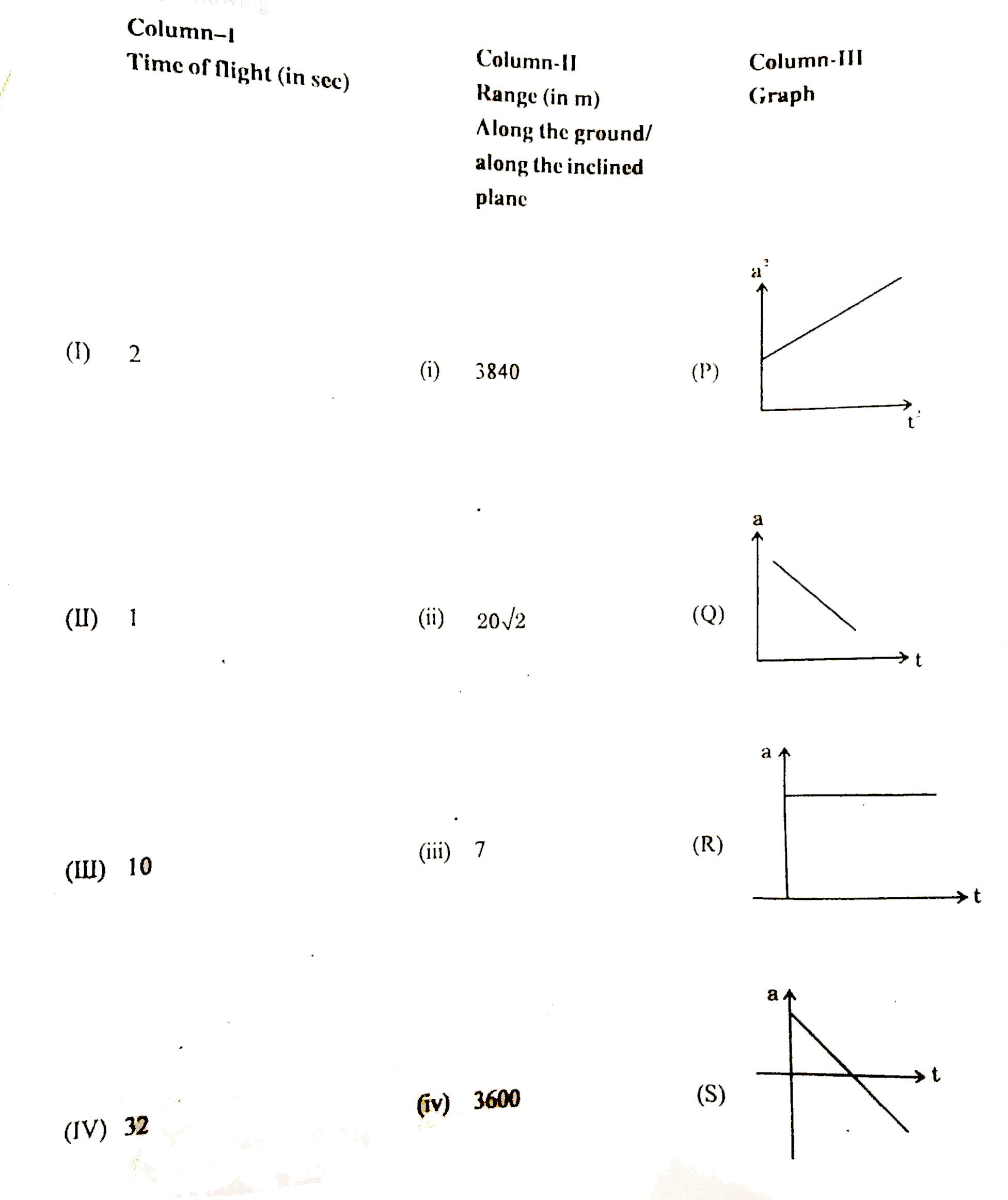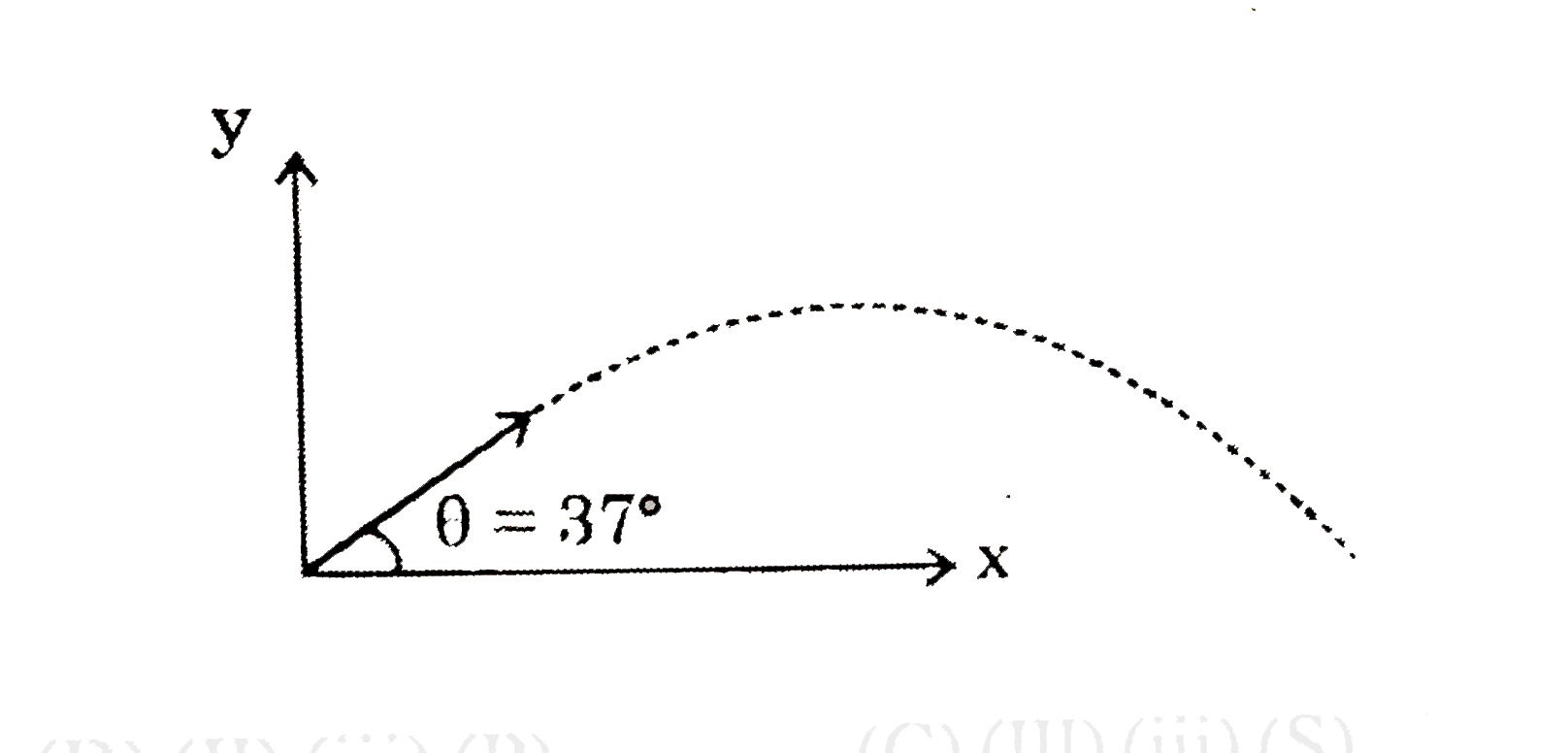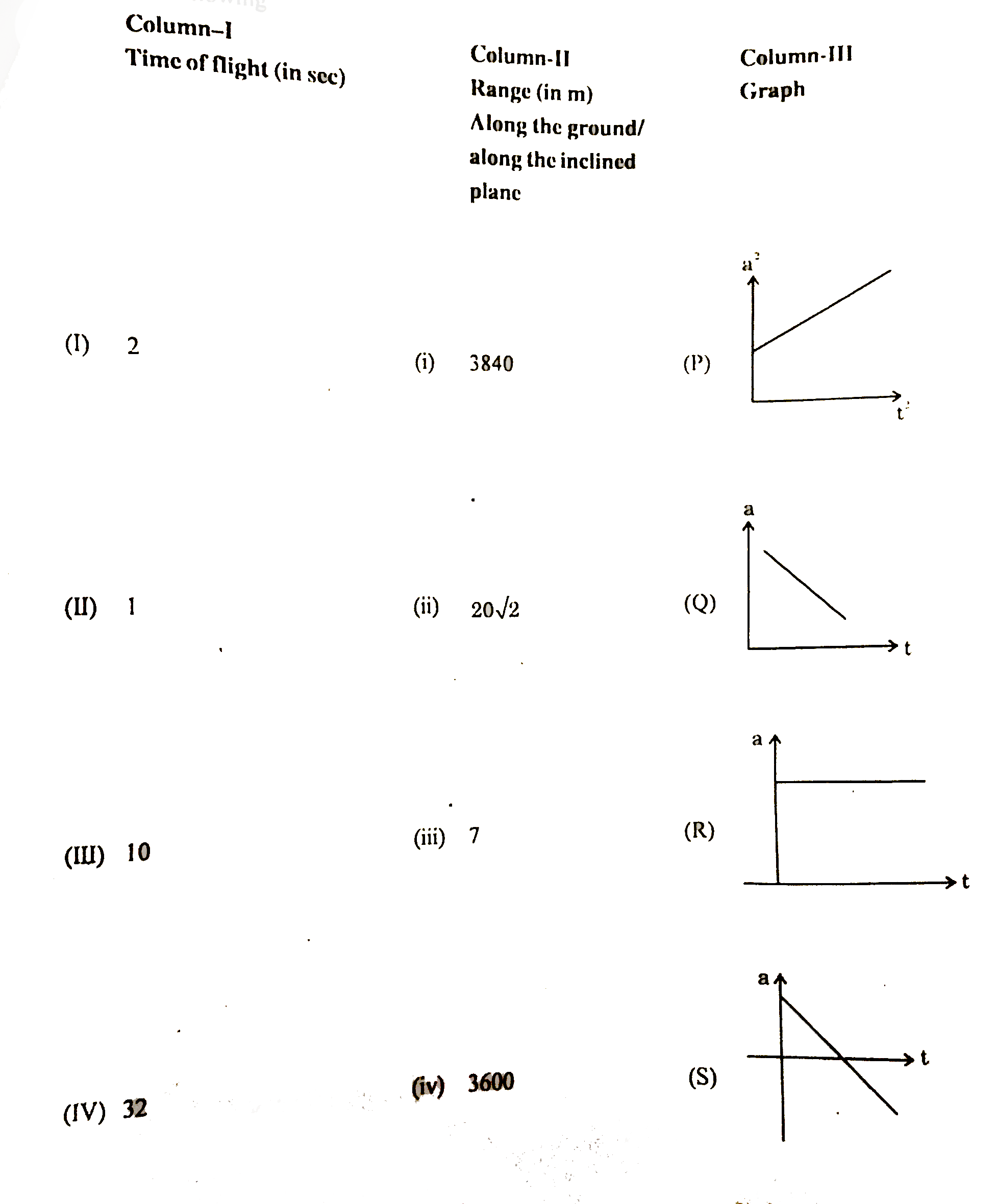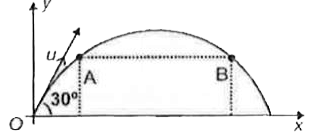Match the following

A particle is projected with initial speed u=253 m/s as shown, here acceleration vector is given as ax=2tˆim/s2,ay=−10ˆjm/s2

(II) (iv) (P)
(II) (iii) (P)
(III) (iii) (S)
(II) (iii) (S)
The correct Answer is:B
Step by step video & image solution for Match the following A particle is projected with initial speed u=25/3 m/s as shown, here acceleration vector is given as a_(x)= 2t hat(i) m//s^(2), a_(y) = -10hat(j) m//s^(2) by Physics experts to help you in doubts & scoring excellent marks in Class 12 exams.
Updated on:21/07/2023Topper's Solved these Questions
Similar Questions
Match the following

A particle is projected from a large fixed incline plane as shown. Here (Vertically downward) take g=10m/s2.

View SolutionA projectile is projected in air with initial velocity →v=(3ˆi+4ˆj) m/s from the origin. The equation of trajectory of the projectile is given as (g=−10ˆjms2) (neglect air resistance )
View SolutionA particle leaves the origin with initial velocity →v0=11ˆi+14ˆjm/s. It undergoes a constant acceleration given by →a=−225ˆi+215ˆjm/s2.
When does the particle cross the y-axis ?
View SolutionA particle is moving with speed 6m/s along the direction of →A=2ˆi+2ˆj−ˆk, then its velocity is :
View SolutionA particle is thrown with a velocity of u m/s. it passes A and B as shown in figure at time t1=1 s andt2=3 s . The value of u is (g = 10 m/s2)

View SolutionVelocity of a particle is given as v=(2t2−3)m/s. The acceleration of particle at t = 3s will be :
View SolutionA particle has initial velocity (3ˆi+4ˆj) and has acceleration (0.4ˆi+0.3ˆj). Its speed after 10s is.
View SolutionThree particles are projected upwards with initial speeds 10m/s,20m/s,30m/s. The displacements covered by them in their last second of motion are x1,x2,x3 then:
View SolutionA particle is moving in a circular path. The acceleration and momentum of the particle at a certain moment are a=(4ˆi+3ˆj)m/s2andp=(8ˆi−6ˆj)kg-m/s. The motion of the particle is
View SolutionA particle is moving with a position vector, →r=[a0sin(2πt)ˆi+a0cos(2πt)ˆj]. Then -
View Solution